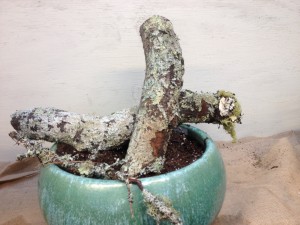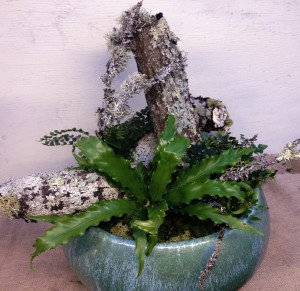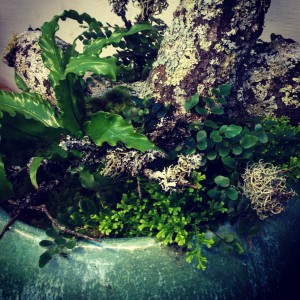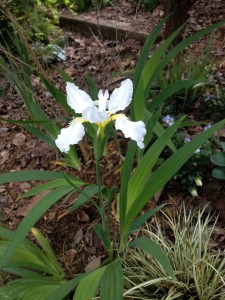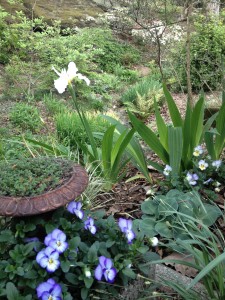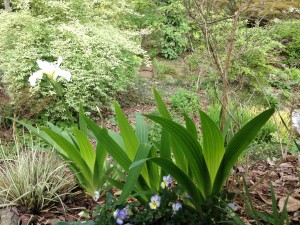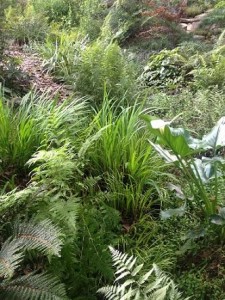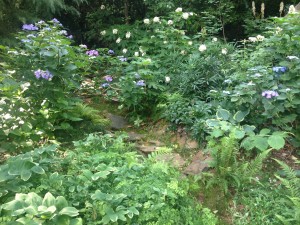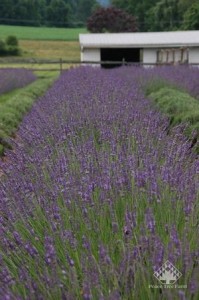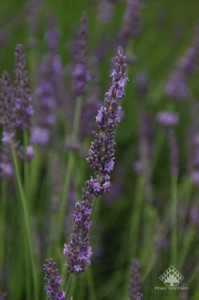
Molly…the beginning.
If you’ve kept up with some of the posts of projects we’ve done at Oak Street Garden Shop, you might realize we enjoy creating fun things as well as helping customers with plants and gardening. Our latest project started life as an old table…one that perhaps had seen better days.
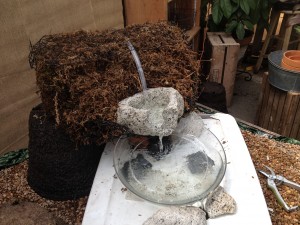
Rigging the waterfall…
We’d all discussed creating a larger miniature garden display using hills and had seen many miniature garden displays on various sites online through Pinterest and other places. I showed everyone a really large display that even had a waterfall and “boulder” filled stream. Well, we wanted a waterfall too!
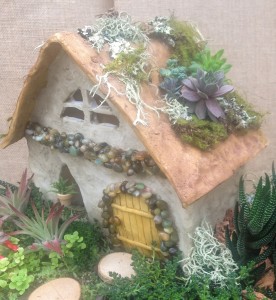
The cottage Jamie embellished…
So, the idea of a waterfall and hills became the starting point. Our display would need a miniature garden house, and Jamie embellished a rather plain one with the addition of “stones” on the front and moss, lichen and succulents on its roof. Now it looked like the charming cottage we envisioned.
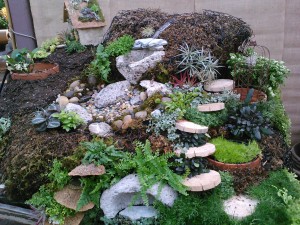
In just a few days our sad little table became the home to a sea shell laden beach, grottos, the aforementioned waterfall, and various places to walk and sit. Little by little it grew in proportions with the addition of tiny houseplants on the right hand side of the display and succulents on the other.
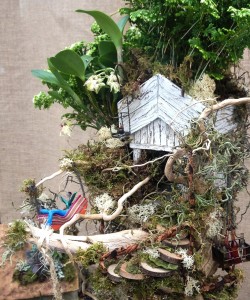
Lauren’s treehouse…
Lauren worked for days on the “treehouse”, starting with a piece of tree root and adding a miniature garden cottage. She slowly added more and more to this hideaway in a tree, including a pulley to haul up a case of wine, a hammock, and a rope swing over the waterfall below. Billy helped secure it so it wouldn’t topple. I may do a whole post on this alone!
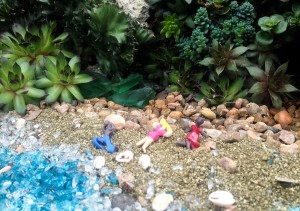
Tiny sunbathers…
Pinkie contributed her arts background and brought in some Sculp It! modeling clay that Molly, Lauren and Bert used to fashion tiny figures. Sunbathers on the beach, an entire yoga class under the tree house, (On their yoga mats!) a figure that looks suspiciously like owner, Billy Angell, tending the garden in front of the cottage, and more. Two rather large people – not quite in scale with the rest, but much too fun not to include, are seated at the bistro table front and center.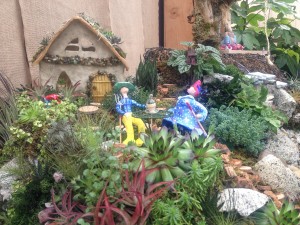
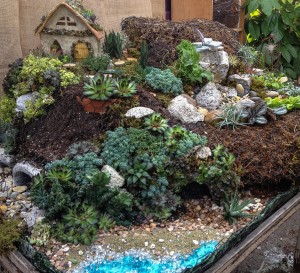
Adding more plants…
Jamie and I continued to plant and add more items – a frog on a bench, a turtle on a “boulder” a birdhouse, benches, and so much more. All the while more ideas got bounced around – a customer even suggested adding a gnome – what a fun idea! People invariably made the comment that they kept “finding” more as they gazed at this miniature wonderland in progress.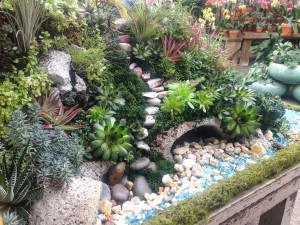
Of course we had the world of the greenhouse at our fingertips to create this – including tiny houseplant ferns, air plants, aluminum plants, Scotch and Irish moss, selaginella and even tiny pitcher plants. Plants that required the same moisture were grouped together. This meant the succulents and plants that like to be drier naturally ended up separate. Hen and chicks, haworthias and sedums were tucked in the sphagnum moss and chicken wire “hillside”.
Tiny tree slice stepping stones make a path to the “beach”. Walk a little further around and it gets rockier and less “beachy”, but there’s a fire pit for a night time party…and cliff caves to explore too. Rough rock steps lead the way back up to the cottage from here.
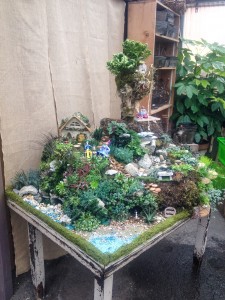
A work in progress…
The spring planting season is about to begin and people will be wandering the nursery to find plants for their outdoor spaces and planters. I hope they’ll make their way into the greenhouse with their friends and families to see our own “garden in miniature” and that it will bring a smile…
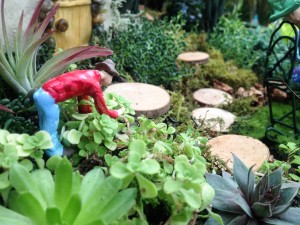
Tending the garden…
As you might be able to tell from these pictures, our project is not quite complete…but what garden ever is?
